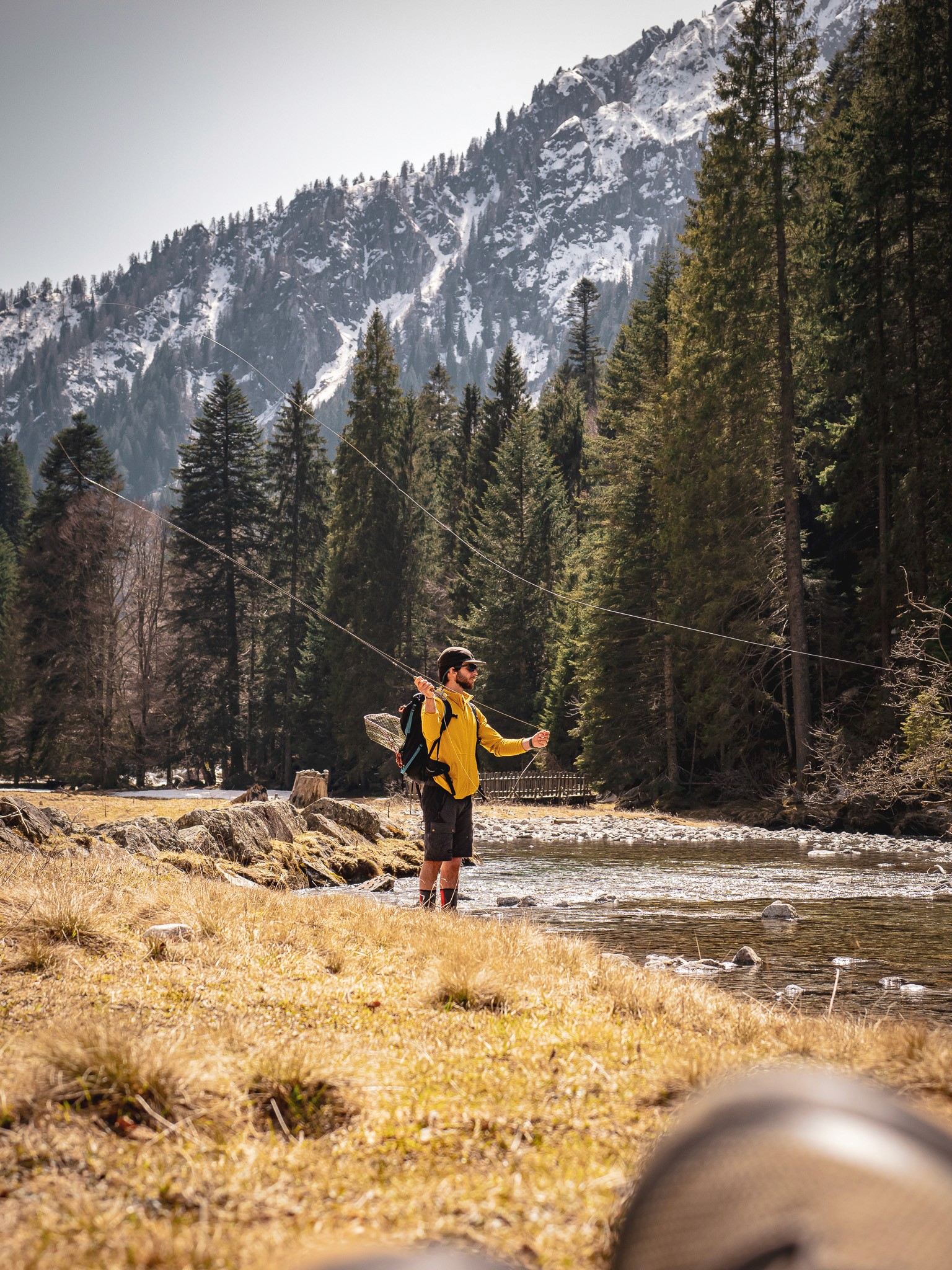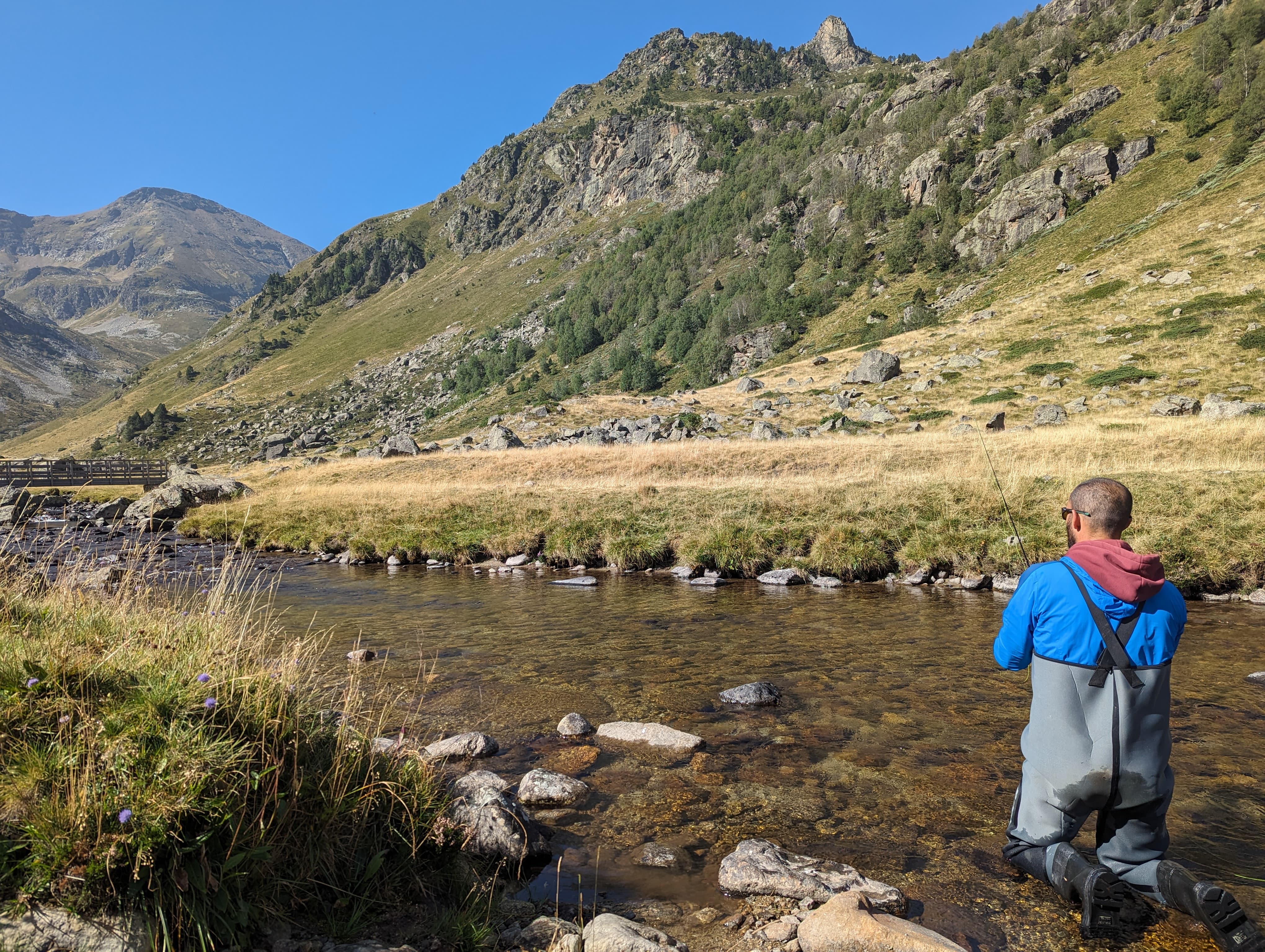Fly Fishing in Italy: A Complete Guide
Feb 3, 2025

Fly fishing in Italy offers far more diversity than many anglers might expect. From Alpine rivers in the north to rolling hills in the center and even lush valleys in the south, Italy provides a spectrum of landscapes perfect for a memorable fishing adventure. Whether you’re a seasoned fly fisher or a curious beginner, the country’s blend of stunning scenery, rich history, and healthy fish populations makes it an ideal destination. Below, we’ll explore key questions and insights—from whether people fly fish here, to the best times and rivers to visit, and how foreigners can participate.
Do people fly fish in Italy?
Absolutely—fly fishing in Italy is not only possible but enjoys a vibrant following. While Italy is famous for its art, cuisine, and centuries-old cities, it also has an active fly fishing community. Angling clubs and associations organize workshops, competitions, and events all across the country. To give you a sense of how popular the sport is, here are a few indicative points:
2 million+ fishing licenses: Approximately two million people hold fishing licenses in Italy, encompassing all types of freshwater and saltwater fishing.
Dozens of local fly fishing clubs: From Alpine towns to coastal regions, local clubs foster a tight-knit community focused on preserving waters and teaching newcomers.
Growing tourist interest: More international anglers discover Italy each year, encouraged by the diverse fish species and scenic environments.
In addition to modern fly fishing techniques, Italy has its own historic style known as Valsesiana, developed in the Valsesia region of Piedmont. This method resembles Japanese Tenkara, using a long rod and a simple line without a reel. Valsesiana has been practiced for centuries, making it one of the oldest documented forms of fly fishing in Europe. Its minimalist approach—often just rod, line, and fly—perfectly suits the narrow mountain streams of northern Italy.
Where to fly fish in Italy
When planning where to fish, consider splitting the country into three main areas:
Northern Italy & the Dolomites: The alpine streams in the Dolomites and other mountainous zones feature clear, cold waters ideal for trout and grayling. Rivers like the Sarca and Piave flow beneath towering limestone cliffs, providing both dramatic scenery and thrilling angling.
Central Italy: Regions like Tuscany and Umbria offer a blend of cultural landmarks and productive fisheries. The upper Tiber, near its source in Tuscany, is a prime tailwater fishery for dry-fly enthusiasts. Umbria’s Nera River winds through forested valleys, holding sturdy brown trout ready to take mayflies and terrestrials.
Southern Italy: Less famous for fly fishing, southern regions still offer hidden gems. Near Naples, the Volturno and Cavalieri Rivers boast clear waters with wild Apennine brown trout that come alive during summer hatches. The mild climate allows for a longer fishing season, and you can easily combine a fishing trip with coastal exploration.
Check here a selection of the best itineraries for fly fishing in Italy.

Which are the best rivers to fly fish in Italy?
The “best” rivers often depend on your preferred style—some anglers love small, hidden tributaries, while others enjoy larger, more accessible rivers. However, a few consistently top the list:
Sarca River (Trentino)
Flowing near Lake Garda, the Sarca provides a range of conditions from calm runs to fast currents, ideal for those seeking trout in a scenic alpine setting.Tiber River (Tuscany and Umbria)
Near its headwaters in Tuscany, an artificial barrier creates a superb tailwater environment where trout feed steadily on abundant hatches. Farther south, the Tiber continues through Umbria’s rolling landscapes, rich in history and vibrant culture.Nera River (Umbria)
Renowned for large, surface-feeding brown trout, the Nera meanders through rugged gorges and lush vegetation. Frequent hatches of mayflies and caddisflies make it a paradise for dry-fly anglers. Find here a deep dive about Nera river.Volturno & Cavalieri (Molise and Campania)
Located just an hour from Naples, these rivers delight anglers with wild trout and active summer hatches. You’ll find a mix of pools, riffles, and runs suitable for dry fly, wet fly, and nymph techniques. These rivers are a true and unspoiled paradise.Piave River (Veneto)
Flowing from the eastern Dolomites to the Adriatic Sea, the Piave River offers striking scenery and strong trout populations. Upper stretches can be especially rewarding for those willing to hike into more secluded areas.
Can foreigners fish in Italy?
Yes—foreigners are more than welcome to fly fish in Italy, but you must adhere to local regulations. Typically, you’ll need:
A state fishing license (Licenza di Pesca) available for short-term or annual durations.
Any local permits required for specific rivers or private waters, often managed by regional fishing associations or clubs.
You can purchase these documents online, at local tourist offices, or in tackle shops. Regulations differ across regions and even individual river stretches, so researching your destination or hiring a local guide is the safest way to ensure you’re fishing both legally and responsibly.
When is the best time to fly fish in Italy?
The prime window for fly fishing in Italy generally stretches from late spring to early fall, though exact timing depends on region and altitude.
Spring (April–June): As snowmelt recedes, rivers stabilize, and insect hatches become plentiful. Trout actively feed in the warming waters, making for exciting dry-fly fishing, particularly in central and lower-altitude rivers.
Summer (July–August): Higher elevations in the Dolomites remain cool, with consistent flows and active trout. At lower elevations, focus on morning and evening sessions when temperatures are milder, and fish are more inclined to feed.
Autumn (September–October): Many consider early autumn the sweet spot—fish feed aggressively before winter, and tourist crowds thin out. The changing foliage adds an extra layer of beauty to the riverside experience.
Winter typically brings snow and ice to the Alps and Apennines, limiting access to many rivers. In milder southern regions, you may still find occasional opportunities, though fish activity is lower, and water levels can vary.
Conclusion
Fly fishing in Italy holds abundant rewards for those willing to explore its varied landscapes and delve into its angling traditions. From the alpine grandeur of the Dolomites to the historical richness of central Italy’s rivers, and even the overlooked waters of the south, each region presents unique challenges and delights. Italians do indeed fly fish, and with historic methods like Valsesiana offering a glimpse into one of the earliest forms of the sport, the culture around angling here is both deep-rooted and growing. Foreign visitors can easily obtain the necessary licenses and permits, and the best fishing seasons run from spring through early fall. Ultimately, whether you prefer sight-fishing for trout in crystal-clear streams or casting a dry fly to eager risers in calm tailwaters, Italy’s rivers promise an unforgettable experience—one that pairs naturally with the country’s legendary food, wine, and scenic splendor.









